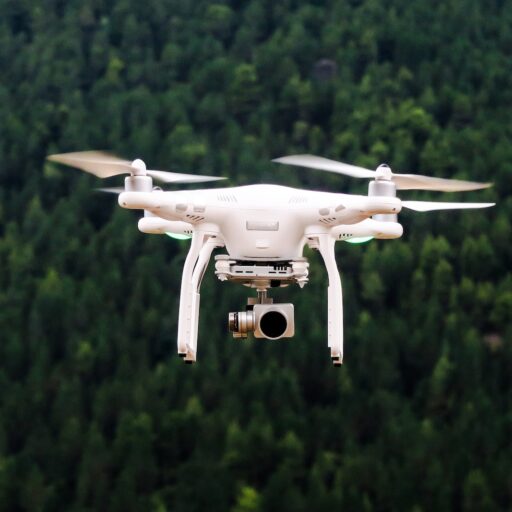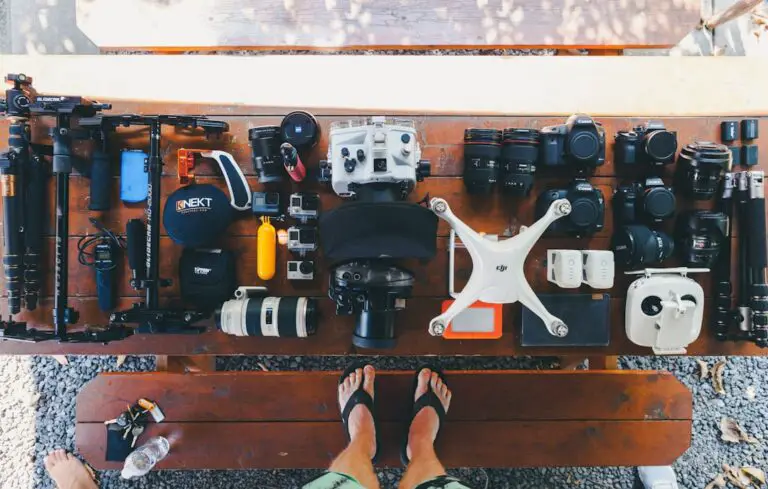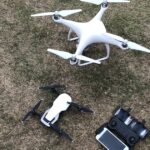Support our educational content for free when you purchase through links on our site. Learn more
🚁 Drone Accident Statistics (2025): 7 Shocking Insights You Need to Know
Ever wondered just how safe your drone flights really are? You’re not alone. As drone ownership skyrockets, so do the stories of unexpected crashes, near misses, and jaw-dropping close calls with manned aircraft. Did you know that over 60% of drone-aircraft encounters happen within 200 feet of airports? Or that 72% of drone injuries are lacerations, mostly to fingers and hands? Whether you’re a weekend hobbyist or a commercial pilot, understanding the latest drone accident statistics is crucial to keeping your flights smooth and your skies safe.
In this article, we’ll unpack 7 shocking insights from real-world data and expert experience at Drone Brands™. From the most common causes of crashes to the future of AI-powered drone safety, we’ve got you covered. Plus, we’ll share actionable tips and gear recommendations that can help you avoid becoming a statistic. Ready to become a smarter, safer pilot? Let’s dive in!
Key Takeaways
- Pilot error remains the leading cause of drone accidents, especially among beginners.
- Lacerations to fingers and hands account for over 70% of drone-related injuries.
- More than 60% of drone-aircraft close encounters occur near airports, highlighting the importance of airspace awareness.
- Pre-flight checks and quality gear like propeller guards and obstacle avoidance drones can drastically reduce risks.
- Emerging tech like AI and Remote ID promises to revolutionize drone safety in the near future.
- For safer flights, consider trusted brands such as DJI, Skydio, and Autel Robotics.
👉 Shop Recommended Drones and Safety Gear:
- DJI Drones: Amazon | DJI Official Website
- Skydio Drones: Amazon | Skydio Official Website
- Propeller Guards & Safety Accessories: Amazon
Table of Contents
- ⚡️ Quick Tips and Facts: Navigating Drone Safety
- 📜 The Evolving Landscape: A Brief History of Drone Regulations and Incidents
- 📊 Unpacking the Numbers: Drone Accident Statistics Explained
- 🕵️♀️ Decoding the “Why”: Common Causes of Drone Accidents and UAV Failures
- 🛡️ Fortifying Your Flight: Essential Drone Safety Recommendations and Best Practices
- 1. Pre-Flight Checks: Your First Line of Defense Against Drone Accidents
- 2. Mastering Your Craft: Advanced Piloting Techniques for Safer Drone Operations
- 3. Staying Informed: Navigating Regulatory Updates and FAA Drone Rules
- 4. The Power of Practice: Sharpening Your Drone Piloting Skills
- 5. Investing in Quality Gear: Reliable Drones and Accessories for Enhanced Safety
- ⚖️ The Aftermath: Legal and Insurance Implications of Drone Accidents
- 🚀 The Future of Drone Safety: Innovations, AI, and the Outlook for UAV Operations
- Conclusion: Flying Smart, Flying Safe – Our Final Thoughts on Drone Accident Prevention
- Recommended Links: Dive Deeper into Drone Safety and Regulations
- FAQ: Your Top Questions About Drone Accidents and UAV Safety Answered
- Reference Links: Credible Sources for Drone Statistics and Aviation Safety
Here is the main content for your article, crafted by the expert pilots at Drone Brands™.
⚡️ Quick Tips and Facts: Navigating Drone Safety
Welcome, fellow aviators! Before we dive deep into the nitty-gritty of drone mishaps, let’s get you airborne with some crucial, bite-sized intel. Think of this as your pre-flight checklist for knowledge. We’ve spent countless hours in the sky, and trust us, knowing these facts can be the difference between a breathtaking flight and a heartbreaking “thud.” For a broader look at the numbers, check out our comprehensive guide to drone statistics.
Here are the key takeaways on drone accident statistics:
- Human Element is Key: A significant portion of drone incidents boils down to pilot error. Yep, that means us!
- Age & Gender Skew: According to one study, from 2015 to 2019, 84% of patients injured by drones were male, and 21% were under 18 years old.
- Most Common Injuries: Forget Hollywood explosions. The most frequent drone-related injuries are lacerations (72%), often to the fingers and head.
- Close Encounters: A staggering 60% of drone-aircraft close encounters happen within 200 feet of an airport, highlighting the critical importance of knowing your airspace.
- Time of Day Matters: Most incidents occur when most of us are flying. About 75% of reported drone incidents happen between 10 a.m. and 10 p.m.
- Fatalities are Rare, But…: Drone-related fatalities are exceedingly rare. However, one tragic death occurred not from the drone itself, but from electrocution when someone tried to retrieve a drone from power lines with a metal pole. A sobering reminder that the danger isn’t always from the sky.
- Registration is Law: In the United States, as of October 2024, there were approximately 800,000 registered drones. If your drone weighs more than 0.55 lbs (250 grams), you must register it with the FAA.
📜 The Evolving Landscape: A Brief History of Drone Regulations and Incidents
Remember the good old days? When seeing a drone was a novelty, a sci-fi dream buzzing in the local park? Well, those days are long gone! Drones, or Unmanned Aircraft Systems (UAS), have exploded in popularity for everything from cinematic wedding shots to critical infrastructure inspection. This rapid rise meant that regulators had to play catch-up, leading to the dynamic world of Drone Laws and Regulations we navigate today.
Initially, the skies were a bit like the Wild West. Early hobbyists flew with few rules, but as drones became more powerful and accessible, incidents inevitably followed. Reports of drones interfering with firefighting aircraft, flying too close to airports, and causing privacy concerns pushed agencies like the Federal Aviation Administration (FAA) to act.
This led to the creation of key regulations, most notably the Small UAS Rule (Part 107) for commercial pilots and specific rules for recreational flyers. These weren’t just bureaucratic hurdles; they were essential steps to integrate drones safely into the national airspace. The National Transportation Safety Board (NTSB) also plays a role, investigating serious aviation accidents, which now includes certain drone incidents. The journey from novelty toy to regulated aircraft has been rapid, and understanding this history helps us appreciate why safety and awareness are paramount for every pilot.
📊 Unpacking the Numbers: Drone Accident Statistics Explained
Alright, let’s crunch the numbers. Statistics can sometimes feel dry, but these figures paint a vivid picture of the real-world risks and trends in the drone world. By understanding what’s happening out there, you can become a smarter, safer pilot.
1. Commercial Drone Incidents: What the Data Reveals
For those of us flying for work, safety isn’t just a best practice—it’s a business necessity. While the overall aviation accident rate is meticulously tracked, specific data for commercial drones is still an evolving field. The International Air Transport Association (IATA) notes that the global all-accident rate for traditional aviation was 1.13 per million flights in 2024. While not a direct comparison, it sets a benchmark for the level of safety we should all be striving for in the drone industry.
The FAA’s Part 107 has been a game-changer, professionalizing the industry. However, incidents still occur, often related to operations in complex environments or pushing the limits of technology. Check out the latest in the Drone Industry News to stay updated on commercial drone applications and safety standards.
2. Recreational Drone Crashes: Understanding the Risks
This is where the bulk of incidents happen. With millions of consumer drones from brands like DJI, Autel Robotics, and Skydio in the hands of hobbyists, it’s no surprise that things can go wrong. Let’s look at the injuries.
A study analyzing emergency department data from 2015-2019 found approximately 4,250 drone-related injuries in the US. Here’s how that breaks down:
| Injury Type & Body Part | Percentage of Total Injuries | Common Scenario |
|---|---|---|
| Lacerations | 72% | Hand-catching a drone, fingers getting caught in propellers. |
| Contusion/Abrasion | 10% | Being struck by a falling or out-of-control drone. |
| Head Injuries | 24% | Drones falling from the sky or flying into a person’s face. |
| Upper Extremities (Fingers) | 56% | The most common area for injury, usually from propeller strikes. |
As the data shows, “the most common injury diagnoses were lacerations (72%).” This is a stark reminder to treat propellers with the respect they deserve—they are essentially spinning blades!
3. Near Misses and Airspace Incursions: A Closer Look at UAV Safety
Perhaps the most chilling statistic is the proximity of drones to manned aircraft. It’s every pilot’s worst nightmare. Data shows that these aren’t isolated incidents:
- ✅ Over 60% of drone-aircraft close encounters occurred within 200 feet of an airport.
- ✅ More than 1 in 5 were within 50 feet.
- ✅ Single-engine prop planes were involved in the most reported incidents (125 cases), followed closely by multi-engine jets (116 cases).
These numbers are a wake-up call. Flying near an airport isn’t just risky; it’s reckless and illegal without proper authorization. The FAA’s B4UFLY app is an essential tool for every pilot to check for airspace restrictions before every single flight.
🕵️♀️ Decoding the “Why”: Common Causes of Drone Accidents and UAV Failures
So, why do drones crash? Is it a ghost in the machine or something more predictable? In our experience, it’s almost always a combination of factors, but they usually fall into one of these buckets.
1. Pilot Error: The Human Factor in Drone Incidents
Let’s be honest with ourselves. The most sophisticated drone, like a DJI Mavic 3 Pro, is only as good as the pilot at the controls. Overconfidence, distraction, and a simple lack of knowledge are the biggest culprits.
We once saw a pilot try to fly their brand-new drone indoors at a crowded event. What could go wrong, right? 🤦♂️ The drone’s GPS signal was weak, it drifted due to indoor air currents, and panicked, the pilot flew it straight into a wall. No one was hurt, thankfully, but it was a classic case of exceeding one’s skill level in an improper environment. This is the #1 cause of accidents for those just starting out with Beginner Drones.
2. Mechanical Malfunctions: When Drone Technology Fails
While less common than pilot error, hardware failures do happen. These can be terrifying because you can do everything right and still lose control.
- Propeller Failure: A cracked or improperly secured prop can detach mid-flight, causing an instant, unrecoverable tumble.
- Motor Seizure: Overheating or debris can cause a motor to fail.
- Battery Malfunction: A sudden battery failure can lead to a complete power loss. This is why checking battery health and never flying with damaged batteries is critical.
- ESC (Electronic Speed Controller) Failure: This is the brain that tells each motor how fast to spin. If one fails, the drone will lose stability.
3. Environmental Challenges: Battling the Elements with Your Drone
You’re not just flying a drone; you’re flying in a dynamic environment.
- Wind: The most common environmental foe. A sudden gust can send a smaller drone tumbling or cause it to drift into an obstacle. Always check the wind speed and your drone’s wind resistance specs.
- Rain/Moisture: Most consumer drones are not waterproof. Flying in the rain can short out electronics and lead to a crash.
- Magnetic Interference: Flying near large metal structures or power lines can throw off your drone’s compass, leading to erratic flight or a “flyaway.”
- Birds: Yes, birds! Territorial birds of prey have been known to attack drones, sometimes with successful (and destructive) results.
4. Software Glitches and Connectivity Issues: The Digital Side of Drone Crashes
Modern drones are flying computers. And like any computer, they can have software problems.
- Firmware Update Issues: A botched firmware update can brick a drone or cause unpredictable behavior. Always update in a controlled environment.
- Loss of Control Link: This is when the remote controller loses its connection to the drone. Most modern drones have a “Return to Home” (RTH) function for this, but if the RTH altitude is set incorrectly, it could still fly into an obstacle on its way back.
- GPS Signal Loss: Losing GPS can cause the drone to drift, making it difficult to control, especially for newer pilots who rely on it for stable positioning.
🛡️ Fortifying Your Flight: Essential Drone Safety Recommendations and Best Practices
Knowledge is power, but action is everything. Knowing why drones crash is useless unless you use that knowledge to fly safer. Here are the actionable steps our team at Drone Brands™ takes before and during every flight.
1. Pre-Flight Checks: Your First Line of Defense Against Drone Accidents
Never, ever skip your pre-flight check. It takes two minutes and can save you from a world of hurt. The FAA even has recommendations, but we’ve built our own checklist over the years.
Our Drone Brands™ Pre-Flight Checklist:
- ✅ Check the Drone Body: Look for any cracks or damage.
- ✅ Inspect Propellers: Check for nicks, cracks, or stress marks. Replace them if you find any!
- ✅ Check Motors: Spin them by hand. Do they move freely? Any weird noises?
- ✅ Secure Batteries: Ensure the battery is fully seated and the latch is secure. Check its charge level.
- ✅ Power On & Connect: Turn on the controller, then the drone. Ensure a solid connection.
- ✅ Check GPS Lock: Wait for the drone to acquire a strong GPS signal (usually 10+ satellites).
- ✅ Calibrate Compass (if needed): If you’ve traveled far or the app prompts you, recalibrate the compass.
- ✅ Set RTH Altitude: Make sure your Return-to-Home altitude is higher than any obstacles in the area.
- ✅ Scan the Area: Do a 360-degree scan for obstacles, people, and potential hazards.
2. Mastering Your Craft: Advanced Piloting Techniques for Safer Drone Operations
Once you’ve mastered the basics, don’t get complacent. True mastery comes from continuous learning.
- Fly Manually: Practice flying in ATTI (Attitude) mode, which disables GPS positioning. This forces you to learn true stick control and will make you a much better pilot.
- Practice Emergency Maneuvers: Know how to initiate an emergency motor stop. Practice “figure 8” patterns and other drills to improve your muscle memory and control.
- Understand Your Drone’s Limits: Don’t be the person who flies their drone into a fireworks display. Know its max speed, wind resistance, and signal range, and respect those limits.
3. Staying Informed: Navigating Regulatory Updates and FAA Drone Rules
The rules of the sky are always changing. It’s your responsibility as a pilot to stay current. The FAA’s Small Unmanned Aircraft Systems Rule (Part 107) is required reading for commercial pilots. For everyone, we highly recommend bookmarking the FAA’s drone page and our own Drone Laws and Regulations section.
4. The Power of Practice: Sharpening Your Drone Piloting Skills
There is no substitute for stick time. The more you fly, the more intuitive it becomes.
- Use a Simulator: Programs like the DJI Virtual Flight app or Liftoff: FPV Drone Racing are fantastic for practicing without risking your actual drone.
- Start in an Open Field: Find a large, open area with no people or obstacles and just practice. Master hovering, orientation, and basic maneuvers before you try anything fancy.
5. Investing in Quality Gear: Reliable Drones and Accessories for Enhanced Safety
Your gear can make a huge difference. While even the best drones can crash, quality equipment is generally more reliable.
- Propeller Guards: Especially for beginners or those flying near people, prop guards offer a great layer of protection. “Propeller guards can offer protection from propeller injuries.”
- Strobe Lights: For flying during twilight (with a waiver) or just for better visibility, anti-collision strobes are a must-have.
- Quality Drones: Brands like DJI, Autel, and Skydio have invested heavily in safety features like obstacle avoidance and reliable RTH functions. Investing in a drone from a reputable brand in our Drone Brand Guides can pay dividends in safety.
👉 Shop Recommended Safety Gear:
- Lume Cube Strobe Anti-Collision Light: Amazon | Lume Cube Official Website
- DJI Mavic 3 Propeller Guard: Amazon | DJI Official Website
- Firehouse Technology ARC V Strobe: Amazon | Firehouse Technology Official Website
⚖️ The Aftermath: Legal and Insurance Implications of Drone Accidents
Okay, so the worst has happened. You’ve had a crash. What now? The moments after an incident are critical and can have significant legal and financial consequences.
Reporting Drone Incidents: What You Need to Know and How to Comply
Knowing when and how to report a drone accident is not just good practice; it’s the law. The rules can seem confusing, but they generally depend on the severity of the incident. The FAA requires you to report any accident that results in serious injury or property damage over a certain value. The NTSB has its own set of reporting requirements for more significant incidents.
To get a crystal-clear understanding of this, the first YouTube video we’ve featured, titled “Drone Accident Reporting: A Summary of FAA, NTSB, and NASA requirements” by Pilot Institute, is an invaluable resource. Greg from Pilot Institute does a fantastic job breaking down the specific requirements in the video found at #featured-video, which we highly recommend watching.
Drone Insurance: Protecting Your Investment and Liability in the Skies
If you’re flying for any reason, but especially if you’re exploring Drone Business Opportunities, you need insurance. Period.
- Liability Insurance: This covers you for damage or injury to third parties. If your drone falls and damages a car or, worse, injures a person, this is what protects you from potentially massive costs.
- Hull Insurance: This covers damage to the drone itself. If you’ve invested in a pro-level drone, this can save you from a total financial loss after a crash.
Companies like SkyWatch.AI and Verifly offer on-demand and annual policies that are accessible and tailored for drone pilots. Don’t fly without it!
🚀 The Future of Drone Safety: Innovations, AI, and the Outlook for UAV Operations
The future is bright, and it’s getting safer! The technology is evolving at a blistering pace, with safety at the forefront of innovation.
- Advanced Obstacle Avoidance: We’re moving beyond simple sensors to full 360-degree, AI-powered collision avoidance. Drones like the Skydio 2+ are leading the charge, able to navigate complex environments autonomously.
- Remote ID: The FAA’s Remote ID rule is like a digital license plate for drones, broadcasting identification and location information. This will enhance accountability and allow for more complex operations like flying over people and beyond visual line of sight (BVLOS).
- Geofencing 2.0: Geofencing, which prevents drones from flying into restricted areas, is becoming more sophisticated and dynamic, able to update in real-time for temporary flight restrictions (TFRs) like stadium events or emergencies.
- Improved Battery Tech: Advances in battery technology will not only mean longer flight times but also more reliable power delivery and better health monitoring to prevent sudden failures.
As technology improves, the burden of avoiding accidents will shift slightly from pure pilot skill to a partnership between the pilot and an increasingly intelligent aircraft. It’s an exciting time to be in the Drone Industry News, and we can’t wait to see what comes next
Conclusion: Flying Smart, Flying Safe – Our Final Thoughts on Drone Accident Prevention
Phew! We’ve soared through the skies of drone accident statistics, dissected the causes, and navigated the complex airspace of safety recommendations. At Drone Brands™, our experience tells us that most drone accidents are preventable — they often boil down to pilot error, environmental surprises, or equipment failure. But armed with the right knowledge and tools, you can dramatically reduce your risk.
Remember the story of the pilot who flew indoors at a crowded event? That cautionary tale highlights a universal truth: respect your drone’s environment and your own skill level. Whether you’re flying a beginner drone or a professional-grade DJI Mavic 3 Pro, the fundamentals remain the same — preparation, awareness, and continuous learning.
Safety isn’t just about avoiding crashes; it’s about protecting yourself, others, and the future of this incredible technology. The future looks promising with AI-powered obstacle avoidance, Remote ID, and smarter geofencing, but until those systems are ubiquitous, you are the most critical safety component.
So, are drone accidents increasing? Yes, as drone popularity soars, incidents rise too — but so does awareness and regulation. The key takeaway? Fly smart, stay informed, and respect the skies. Your drone adventures will be safer, more enjoyable, and infinitely more rewarding.
Recommended Links: Dive Deeper into Drone Safety and Regulations
Ready to gear up for safer flights? Here are some top picks from our experience and trusted sources to help you fly with confidence:
- DJI Mavic 3 Pro:
Amazon | DJI Official Website - Skydio 2+:
Amazon | Skydio Official Website - Autel Robotics EVO Lite+:
Amazon | Autel Robotics Official Website - Lume Cube Strobe Anti-Collision Light:
Amazon | Lume Cube Official Website - DJI Mavic 3 Propeller Guard:
Amazon | DJI Official Website - Firehouse Technology ARC V Strobe:
Amazon | Firehouse Technology Official Website
Books for Further Reading:
- “Drones for Dummies” by Mark LaFay — A beginner-friendly guide to drone flying and safety.
Amazon - “The Drone Pilot’s Handbook” by Adam Juniper — Expert insights on piloting and regulations.
Amazon
FAQ: Your Top Questions About Drone Accidents and UAV Safety Answered
What are the most common causes of drone accidents?
The majority of drone accidents stem from pilot error, including poor judgment, lack of experience, and flying in inappropriate conditions. Mechanical failures such as propeller damage or battery issues also contribute, as do environmental factors like wind gusts and magnetic interference. Software glitches and loss of signal can cause unexpected drone behavior. Our pilots have seen firsthand how skipping pre-flight checks or flying beyond one’s skill level leads to crashes.
Read more about “What is the Most Common Cause of Drone Accidents? 🚁 7 Key Insights …”
How many drone accidents occur annually worldwide?
While exact global figures are hard to pin down, studies estimate thousands of drone-related injuries and incidents annually in the U.S. alone. For example, between 2015 and 2019, approximately 4,250 drone injuries were treated in U.S. emergency departments. Near-misses with manned aircraft are also reported regularly, with hundreds documented each year. As drone ownership grows, so do the incidents, but increased regulation and education aim to curb this trend.
Read more about “Drone Statistics by Year (2025): 10 Eye-Opening Trends You Must Know 🚁”
What safety measures can prevent drone accidents?
Key safety measures include:
- Performing thorough pre-flight checks (propellers, battery, GPS lock).
- Flying only in safe weather conditions and avoiding obstacles.
- Staying within visual line of sight and respecting no-fly zones.
- Using propeller guards and reliable drones with obstacle avoidance.
- Keeping up with FAA regulations and local laws.
- Practicing regularly and using flight simulators to build skills.
Are drone accidents increasing with the rise of recreational drone use?
✅ Yes, the rise in recreational drone use has led to more accidents and near-misses, especially among inexperienced pilots. However, awareness campaigns like Know Before You Fly and stricter regulations have helped mitigate risks. The key is education and responsible flying.
Read more about “What Are the Statistics for Drones? 15 Must-Know Facts (2025) 🚁”
What are the legal consequences of drone accidents?
Legal consequences vary by jurisdiction but can include:
- Fines for violating FAA regulations or local laws.
- Civil liability for property damage or personal injury.
- Criminal charges in cases of reckless or negligent operation causing harm.
- Mandatory incident reporting to authorities like the FAA or NTSB.
- Potential loss of drone registration or pilot certification.
How do drone accident statistics vary by drone type and usage?
Multirotor drones (quadcopters, hexacopters) are responsible for over 70% of reported incidents, largely due to their popularity among hobbyists. Fixed-wing drones tend to be used more in commercial or agricultural settings and have different risk profiles. Commercial operations under Part 107 tend to have fewer accidents due to pilot training and stricter protocols, but they operate in more complex environments.
What impact do drone accidents have on public safety and privacy?
Drone accidents can cause injuries, property damage, and disruptions to manned aviation. They also raise privacy concerns when drones fly near private property or sensitive areas. Public perception is mixed; while many appreciate drones’ benefits, a significant portion feels nervous or scared when drones fly close to homes or events. Responsible flying and adherence to privacy laws are essential to maintaining public trust.
How can pilots stay updated on drone safety and regulations?
Pilots should regularly check official sources like the FAA’s drone page, subscribe to updates from drone advocacy groups, and follow industry news on sites like Drone Brands™. Participating in forums and training courses also helps maintain awareness of evolving rules.
Read more about “What Are the Top 60+ Drone Brands You Must Know in 2025? 🚁”
Reference Links: Credible Sources for Drone Statistics and Aviation Safety
- FAA Drone Zone – Official Drone Registration and Safety
- FAA Small Unmanned Aircraft Systems Rule (Part 107)
- Know Before You Fly – Educational Campaign
- National Transportation Safety Board (NTSB) Aviation Accident Database
- International Air Transport Association (IATA) Safety Reports
- Insurance Information Institute – Facts + Statistics: Aviation and Drones
- DJI Official Website
- Skydio Official Website
- Autel Robotics Official Website
Fly safe and keep those rotors spinning smoothly! 🚁✨










